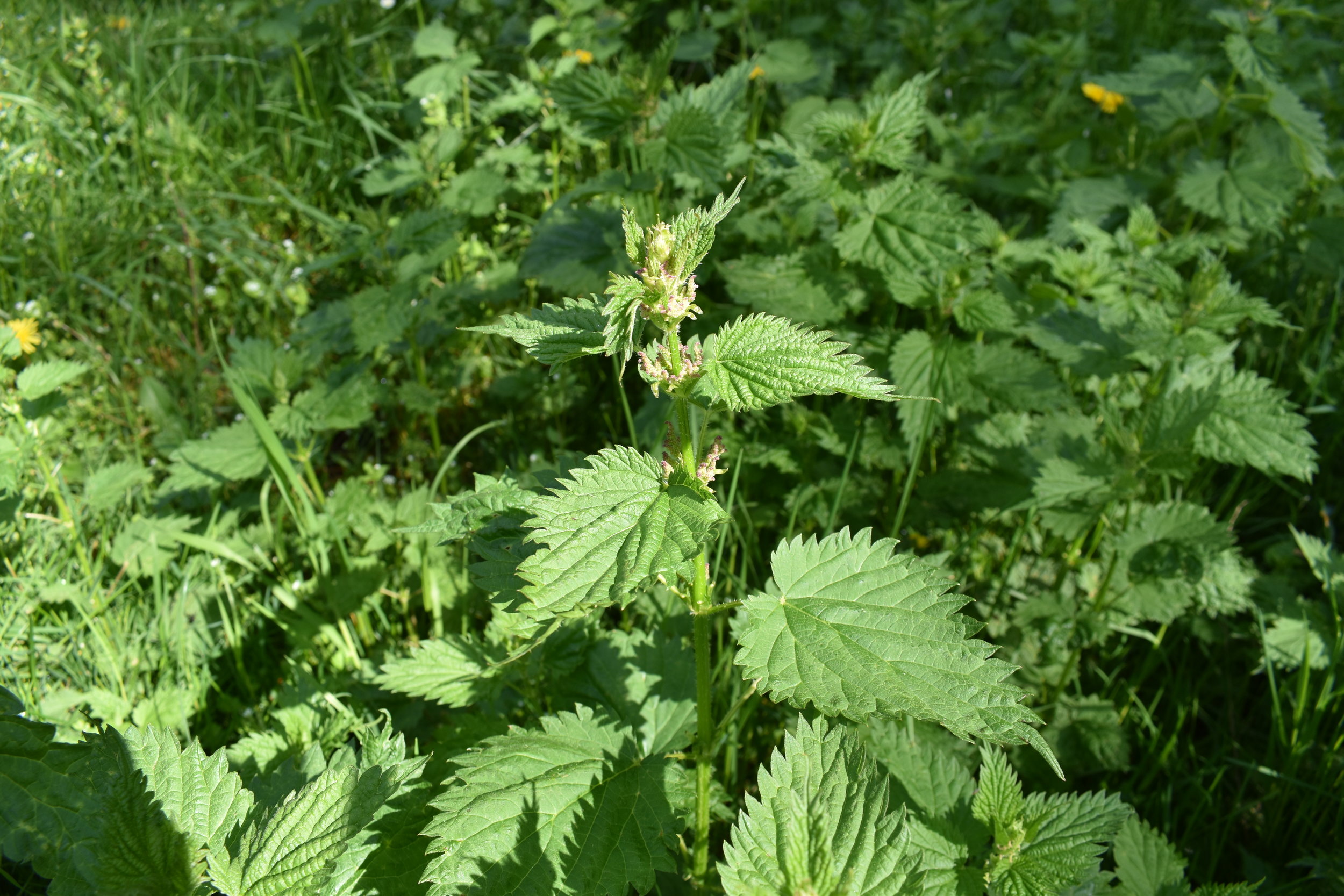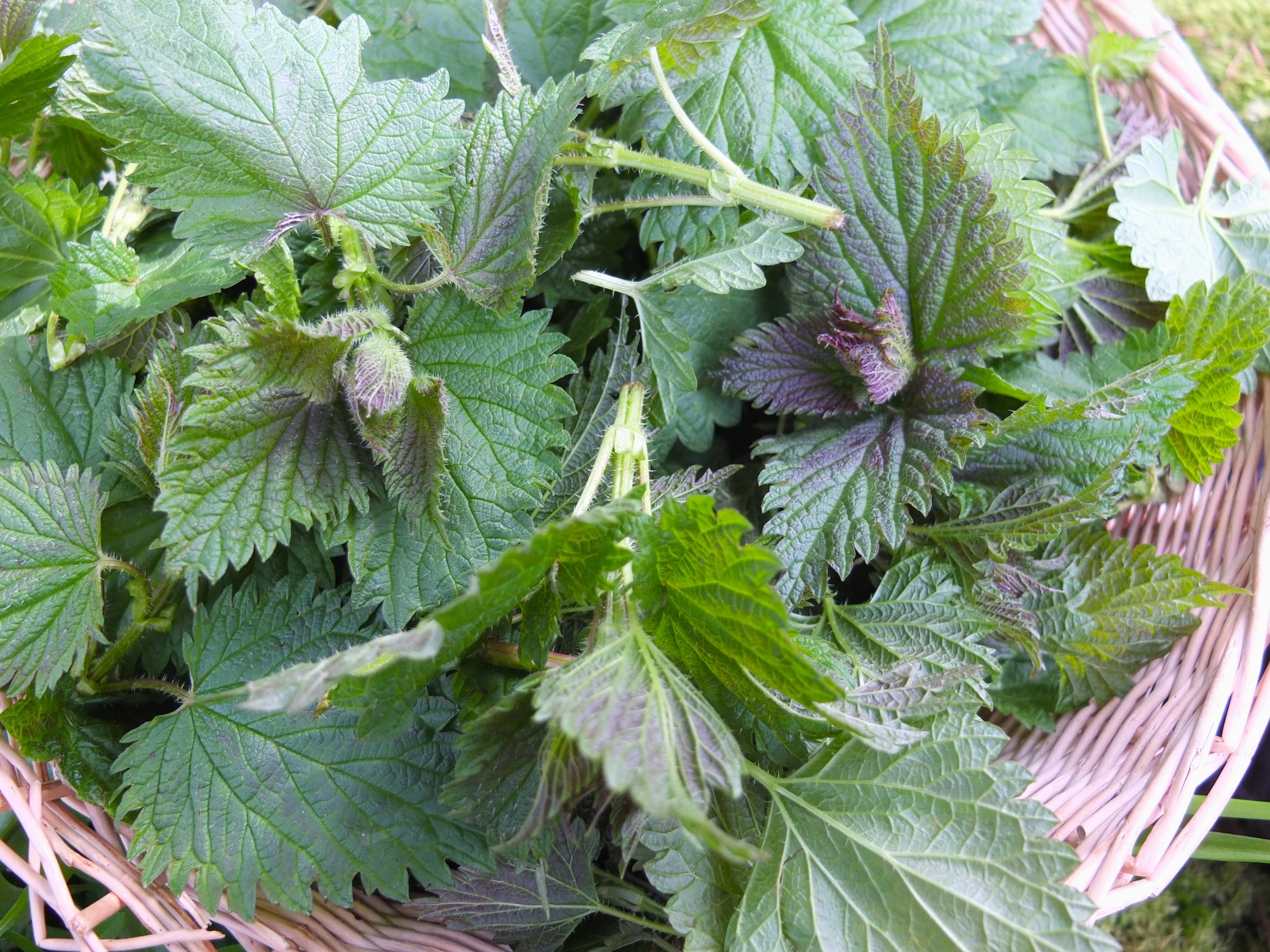Common Names
Stinging Nettle, Common Nettle, Nettle
Botanical Name
Urtica dioica
Plant Family
Urticaceae (Nettle Family)
Native Range
Western North America, Europe, and parts of Asia and Africa.
Life Cycle
Perennial
Hardiness Zone
3-10
Habit
2 ft tall when setting flower buds and arching to 4 or 5ft when in seed.
Sun/Soil
Prefers moist soil and part shade.
Germination/Sowing
Seeds can be direct sown in fall or spring, or started in flats indoors in spring.
Growing/Care
Plants can be cut back in late summer or fall time. The shallow roots need regular moisture throughout the growing season. Nettle is vigorous and spreading by underground rhizomes.
Harvesting
The season for harvesting nettles here on Southern Vancouver Island begins late-February with its peak in April. That's two solid months to get in on the bounty of this nutrient dense wild food. To harvest nettles, the new shoots are best, and all you need is gloves, scissors, and a basket. Once the plants begin to flower this signals the end of the harvest season. At this stage the leaves begin to develop gritty particles called cystoliths which act as an irritant to the kidneys.
Culinary Uses
Nettles are a true gift to our bodies and souls, a wild 'superfood'. Nettle is extremely high in protein, iron, and other minerals and vitamins.
The nettle shoots can be prepared as a braising green, in a similar way to how you would eat spinach or kale. The taste is rich and green and earthy. I love the taste of nettles and I love the way my body feels after eating them. They can be added to soups, smoothies, and dried for tea. Once the nettles are cooked, juiced, pureed, or dried they no longer sting.
Medicinal Uses
Taken as a food, or as a decoction or long infusion, nettle is useful for anemia and nutrient deficiencies. The herb can be taken for regulating menstruation, in formula for bladder infections, and is wonderful internally or externally for arthritis, rheumatism, and inflammation. Also a great antihistamine for seasonal allergies.
Fresh picked nettles can be used to stimulate the skin surface in a process called ‘urtification’ which is used to treat arthritis and rheumatism. The nettle stings act as a counter-irritant creating minor pain that tricks the nervous system into overlooking the deeper pain. The chemicals in the stingers also cause an superficial inflammatory reaction which may trigger the body to release more of its own healing anti-inflammatory chemicals.
This process is truly effective for deep joint pain and I would highly recommend those of you who are suffering to try it. The sting isn't really so bad and often more like a strong tingling sensation. The stinging quickly subsides and the after-effect is like a warm soothing balm. In the relationship I have built with nettle and its medicine, I feel honoured to have this plant in my life, and have learned to cherish its sting!
Themes
Native Plant Garden, Attracts Pollinators, Deer Resistant, Apothecary Garden, Container Garden, Woodland Garden, Wild Foods.






